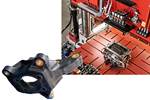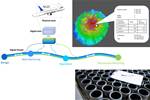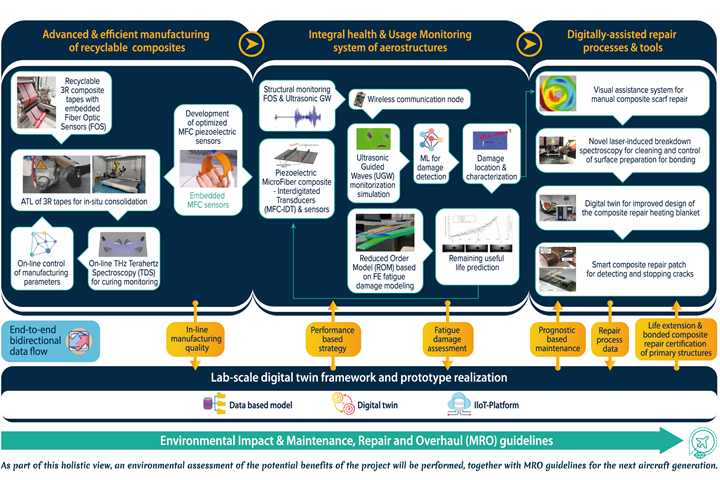EU-funded GENEX project to develop digital twin framework for aircraft lifecycle tracking
Novel digital framework to enable holistic and comprehensive data capture through the entire aircraft lifecycle, supporting composite component/structure manufacture optimization and maintenance.
Photo Credit: genex-project.eu/about/consortium
Launched on Sept. 1, 2022, GENEX is a 42-month, 5.7 million Horizon Europe collaborative research project seeking to develop an end-to-end digital twin-driven framework for optimized manufacturing and maintenance of next-generation composite aircraft structures. Enhanced computational models will embed interdisciplinary knowledge of aircraft components and manufacturing/repair processes to support their optimization as well as enable data management and monitoring across the entire life cycle of the aircraft’s operation.
GENEX runs until February 2026. Its team, consisting of 16 partners from nine different countries, is being coordinated by Dr. Andrea Calvo-Echenique from ITAINNOVA – Technological Institute of Aragon (Zaragoza, Spain).
The core of the GENEX project is based on three technological blocks focused on different facets of the aircraft use life, which, eventually, will be integrated into a fourth to form the multidisciplinary digital twin. Each block is as follows:
- Block 1: Manufacturing Process Digital Twin: An automated tape laying (ATL) process and THz-based in-situ monitoring, coupled with hybrid-twin simulation methods, will be developed for the eco-efficient and advance manufacture of recyclable thermoplastic composites.
- Block 2: Product Usage Digital Twin: Data- and physics-based machine learning (ML) algorithms for damage detection and location, combined with high-performance computing (HPC)-based multi-physics and AI-powered digital twin tools for fatigue life prediction, will be implemented. This will help to predict the remaining useful life of a structure, after the information is received from embedded sensors.
- Block 3: MRO Digital Twin: Augmented reality tools, together with novel laser-assisted methods for surface cleaning and monitoring, smart monitoring and in-situ tailored heating of composite repair blankets, will be further developed to provide additional assistance in manual scarf repair operations, increasing the reliability of the repair process, while supporting the modification and virtual certification of MRO practices.
- Block 4: Cognitive Digital Twin: Combined integration of blocks 1-3 for the realization of a digital twin-drive framework implemented into a common industrial internet of things (IIoT) platform.
“The aviation industry is facing a two-fold challenge — targeting carbon neutrality while also adopting the digitalization of next-generation aircraft,” Dr. Calvo-Echenique says. “In GENEX, we hope to provide the needed technological impulse to optimize composite components manufacturing, and operation and repair processes using digital twin strategies.”
“The technologies that will be developed in GENEX are transversal and applicable to all composites structures, but mainly focused on the specifications of aviation (e.g., requirements and operational conditions),” she continues. “Although the demonstration will be on the primary structure of a mid-range aircraft, the scalability is something of interest for [project] partners, and applicability of the solutions to other sectors (i.e., urban air mobility or wind turbines) will definitely be taken into account.”
Related Content
-
Plant tour: Middle River Aerostructure Systems, Baltimore, Md., U.S.
The historic Martin Aircraft factory is advancing digitized automation for more sustainable production of composite aerostructures.
-
Composites end markets: Electronics (2024)
Increasingly, prototype and production-ready smart devices featuring thermoplastic composite cases and other components provide lightweight, optimized sustainable alternatives to metal.
-
Watch: A practical view of sustainability in composites product development
Markus Beer of Forward Engineering addresses definitions of sustainability, how to approach sustainability goals, the role of life cycle analysis (LCA) and social, environmental and governmental driving forces. Watch his “CW Tech Days: Sustainability” presentation.
















